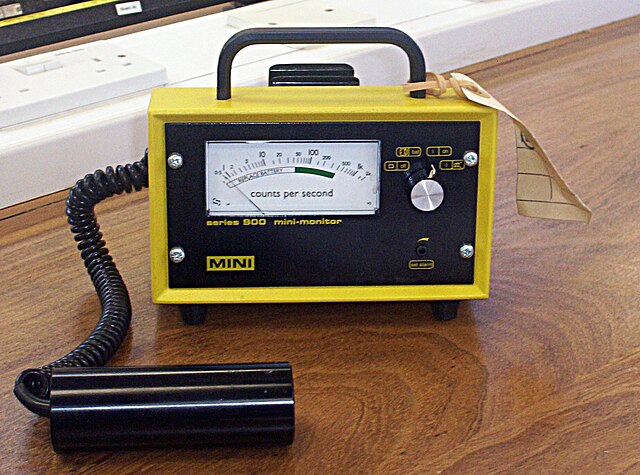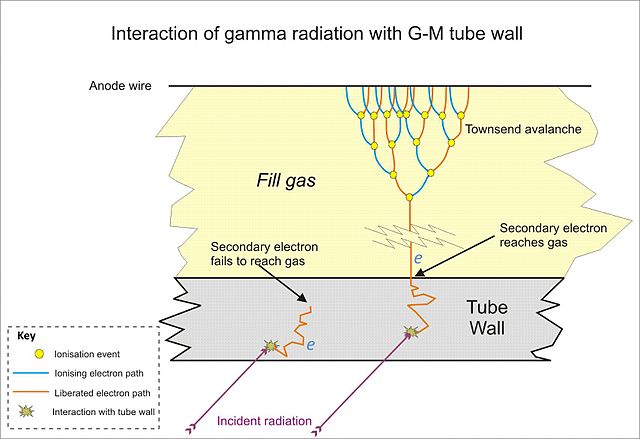The Geiger–Müller tube or G–M tube is the sensing element of the Geiger counter instrument used for the detection of ionizing radiation. It is named after Hans Geiger, who invented the principle in 1908, and Walther Müller, who collaborated with Geiger in developing the technique further in 1928 to produce a practical tube that could detect a number of different radiation types.
A complete Geiger counter, with the Geiger–Müller tube mounted in a cylindrical enclosure connected by a cable to the instrument.
Visualization of the spread of Townsend avalanches by means of UV photons. This mechanism allows a single ionizing event to ionize all the gas surrounding the anode by triggering multiple avalanches.
Detection of gamma in a G-M tube with a thick-walled stainless steel cathode. Secondary electrons generated in the wall can reach the fill gas to produce avalanches. This effect is considerably attenuated at low energies below about 20 KeV
Pancake G–M tube, the circular concentric anode can clearly be seen.
A Geiger counter is an electronic instrument used for detecting and measuring ionizing radiation. It is widely used in applications such as radiation dosimetry, radiological protection, experimental physics and the nuclear industry.
A "two-piece" bench-type Geiger–Müller counter using a cylindrical end-window detector connected to an electronics module with analogue readout
Geiger counter with pancake type probe
Laboratory use of a Geiger counter with end-window probe to measure beta radiation
A Radhound Geiger counter measuring radiation emitted by a tree in Chernobyl







